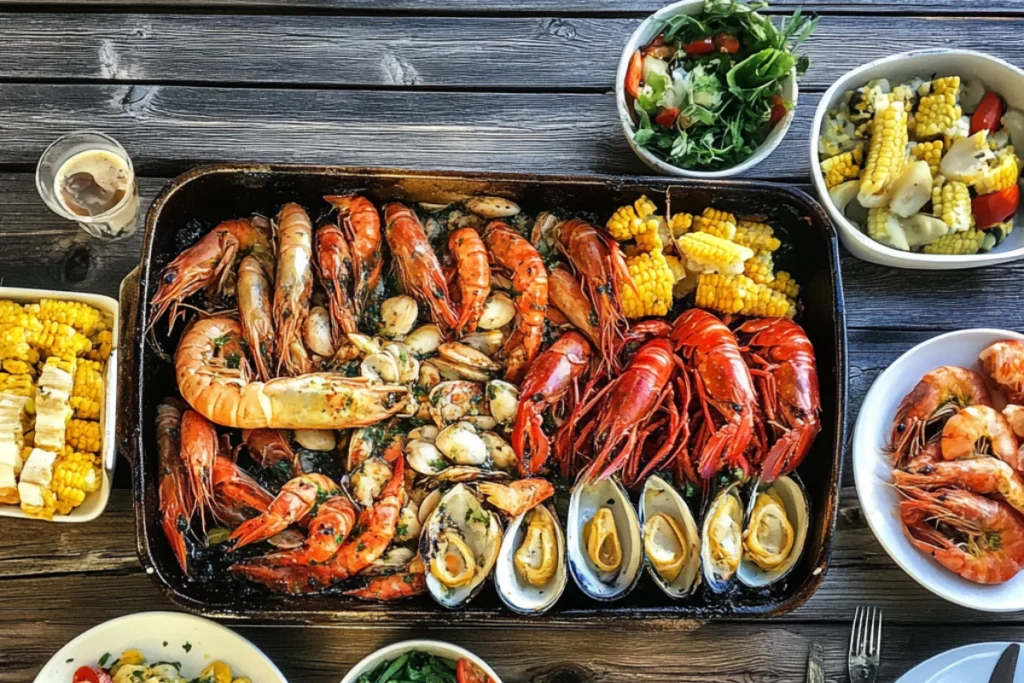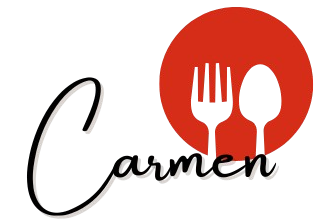
A seafood boil is more than just a meal; it’s an experience that brings people together to enjoy a flavorful pot of seafood, vegetables, and spices. Rooted in Southern culinary traditions, this dish is especially popular in coastal areas and often features ingredients such as shrimp, crab, and corn. Each component plays a role in the overall flavor, and variations in seasonings and add-ons allow each seafood boil to be customized. For those curious about seasonings, you might enjoy this guide on what seasonings go well with venison, which offers insights that can be applied to a variety of dishes.
Seafood boils are versatile, allowing you to experiment with different ingredients and flavors. To learn more about how to prepare similar dishes, check out the ultimate guide to chuck roast recipes, which dives into seasoning and cooking techniques that might inspire your own seafood boil variations.
Key Ingredients in a Seafood Boil
A seafood boil typically includes a variety of seafood, vegetables, sausages, and seasonings that work together to create a flavorful, hearty dish.
1. Types of Seafood Commonly Used
Seafood is the star of the boil, with options that include:
- Shrimp: Known for its ability to absorb seasoning, shrimp is a staple in most seafood boils.
- Crab: Both blue and king crab add sweetness and richness.
- Lobster: A luxurious choice that brings tender meat to the boil.
- Clams and Mussels: Their briny flavors add depth and enhance the broth.
- Crawfish: Essential for Cajun boils, providing a slightly sweet and spicy taste.
Each seafood option has unique flavors and textures, allowing for customization based on personal taste or regional preference.
2. Vegetables and Add-Ons
Vegetables add bulk to the boil and absorb the rich flavors. Common choices include:
- Corn on the Cob: Adds sweetness that complements the spiciness of the boil.
- Potatoes: Red or new potatoes are popular for their texture and heartiness.
- Mushrooms: Earthy and absorbent, mushrooms add depth to the overall flavor.
For a deeper dive into pairing options with hearty ingredients like potatoes, consider reading what pairs well with meatloaf, which provides insights on complementary flavors that could work well in a seafood boil setting.
3. Sausage for Added Flavor
Sausage is often included for its smoky, spicy profile that contrasts with the sweetness of the seafood. Andouille is a traditional choice, but other smoked sausages or kielbasa can be used for different flavor notes. Sausage enhances the dish by adding richness, which is essential for an authentic Southern-style boil.
4. Eggs in a Seafood Boil
Boiled eggs are popular in Louisiana-style boils. When added, they absorb the seasoning, providing a creamy texture that complements the seafood. This unique addition has become a beloved component in many regional boils.
Essential Seasonings for a Seafood Boil
1. Key Spices and Seasonings
The seasoning mix is what brings the seafood boil to life. Common spices include:
- Old Bay: A classic choice for its balanced, slightly spicy flavor.
- Cajun Seasoning: Known for its blend of paprika, cayenne pepper, garlic powder, and thyme.
- Lemon Pepper: Adds a zesty twist that pairs well with the seafood.
For more inspiration on creating flavorful spice blends, explore the ultimate guide to BBQ sauce to see how seasonings can transform dishes.
2. Aromatics for Added Depth
Aromatics such as garlic, onions, and lemons provide additional layers of flavor:
- Garlic: Adds a robust base flavor.
- Onions: Sweeten as they cook, enhancing the broth.
- Lemons: Provide a refreshing acidity that balances the spice.
Adding lemon zest or juice elevates the freshness, cutting through the richness of the seafood and adding a tangy finish.
3. Liquid Base Options
Choosing the right liquid is key to infusing flavors throughout the boil:
- Water: Allows the seasoning to be the main flavor profile.
- Broth: Chicken or seafood broth adds a savory base.
- Beer: Commonly used in Cajun boils, adding slight bitterness and depth.
The choice of liquid can enhance the flavors, creating a richer or more subtle taste based on preference.
Regional Variations of Seafood Boils
Each region has its own unique spin on the seafood boil, with variations in ingredients and seasonings.
1. Cajun-Style Seafood Boil
Cajun boils are known for their bold, spicy flavors and often include crawfish, corn, potatoes, and andouille sausage. The spice profile is robust, featuring ample cayenne pepper and paprika.
2. Low Country Boil (South Carolina/Georgia)
Also known as Frogmore Stew, the Low Country boil is milder, often seasoned with Old Bay. It includes blue crab, shrimp, corn, and potatoes, allowing the fresh flavors of the seafood to shine.
3. New England Clam Boil
New England clam boils emphasize local ingredients, such as clams, lobster, and linguica. The seasoning is simple—typically salt, black pepper, and bay leaves—to highlight the natural flavors.
4. Texas and Florida Variations
In Texas, seafood boils may include additional peppers for extra heat, while Florida boils sometimes have a tropical twist with citrus flavors, reflecting the state’s Caribbean influences.
How to Prepare a Seafood Boil at Home
With a few key steps, you can make a seafood boil at home that rivals any restaurant dish.
- Prepare the Pot: Start with water or your preferred base, and add seasonings, garlic, and lemon slices. Bring to a boil.
- Cook the Vegetables: Potatoes go in first as they take the longest. After 10 minutes, add corn and other vegetables.
- Add the Sausage: Sausage flavors the broth, so add it once the vegetables are close to done.
- Add the Seafood: Begin with larger shellfish like crab, then finish with shrimp, which cooks quickly.
- Drain and Serve: Once cooked, drain the pot and serve on a large platter or spread on newspaper for a traditional experience.
Customizing Your Seafood Boil
Here are a few ways to make the boil your own:
- Adjust the Spice Level: Add more or less cayenne based on preference.
- Use Different Sausages: Andouille is traditional, but kielbasa or smoked sausage also works.
- Add Fresh Herbs: Fresh thyme, rosemary, or bay leaves add aromatic depth.
If you’re interested in pairing options or seasoning ideas, Carmen Recipes’ guide on what pairs well with kielbasa may provide inspiration for your seafood boil as well.
Essential Equipment
- Large Stockpot: A must for combining all ingredients in one pot.
- Strainer: For easy draining before serving.
- Serving Platter or Newspaper: For a traditional, communal presentation style.
Frequently Asked Questions (FAQs)
What’s the best seafood to use in a seafood boil?
Shrimp, crab, and lobster are popular, but clams and mussels work well too.
Can you make a seafood boil without shellfish?
Yes, fish, sausage, and vegetables can create a flavorful, shellfish-free version.
How do you season a seafood boil properly?
Using Cajun or Creole seasoning, Old Bay, garlic, and lemon creates a flavorful boil. Adjust the cayenne for spice control.
What is the difference between a Cajun and Low Country boil?
Cajun boils are spicier with crawfish and andouille sausage, while Low Country boils use shrimp, blue crab, and milder seasoning.
How long does each type of seafood take to cook?
Shrimp cooks in about 3 minutes, while crab and lobster take up to 10-12 minutes. Clams and mussels are done in 5-7 minutes when they open.
Conclusion
Seafood boils are an exciting, flavorful meal that brings people together over bold spices, fresh seafood, and hearty vegetables. Each ingredient and spice adds to the dish, and the variations across regions allow for endless customization. Whether you’re preparing a spicy Cajun boil or a milder Low Country version, seafood boils are a versatile dish that invites creativity and experimentation. For more ideas on seasoning and flavors, explore Carmen Recipes’ ultimate guide to BBQ sauces and seasonings to find additional ways to complement your seafood boil.
With this guide, you’re ready to create a memorable seafood boil at home that captures the rich, delicious flavors of the coast.
